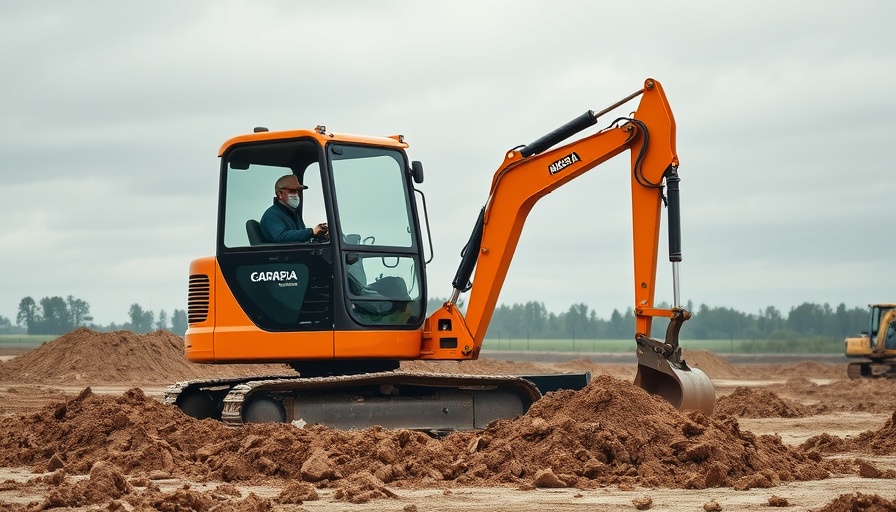
Powerful Mini Excavators That Fit in Tight Spaces
Construction projects often demand equipment that can maneuver in challenging environments without sacrificing power, and the introduction of CASE's new midi excavators promises just that. The CX85E and CX90E are designed to meet the needs of contractors who operate in confined spaces like urban job sites, where longer, traditional excavators might struggle. Weighing in at around 8.8 and 9.2 metric tons, respectively, these midi excavators bring big-machine performance with a smart, space-efficient design.
Advanced Features that Enhance Operator Experience
Both models feature a 72-horsepower Yanmar engine and are equipped with various advanced features aimed at increasing operator comfort and efficiency. With comfortable heating air-suspension seats, a 7-inch LCD touchscreen display, and an ergonomic joystick control setup, operators can work productively without unnecessary strain during long work hours.
The CX85E has a fixed boom and zero tail swing, making it especially beneficial for working in tight spots where clearance is limited, like against walls or fences. The CX90E, on the other hand, offers a 180-degree swing boom, ideal for executing precise digging tasks in cramped locations.
Maintenance and User-Friendly Design
Another critical consideration for contractors is the ease of maintenance. CASE anticipated this by positioning service points at ground level, allowing easy access without tedious climbing. The tilting cab reveals the hydraulic components effortlessly, simplifying repair and upkeep procedures.
Additionally, the robust design allows for a variety of track choices, catering to different job site conditions—contractors can opt for full rubber, steel with rubber pads, or 18- or 24-inch-wide steel tracks to meet specific project needs.
Comparative Advantage in the Equipment Market
These new midi excavators from CASE fill a specific niche between mini and standard-sized excavators, a space increasingly recognized by the industry. They join a growing lineup that supports not only CASE's product range but also mirrors similar advancements at sister company New Holland, which has rolled out competitive models.
The CX85E and CX90E are poised to stand out in a crowded market, ensuring that contractors have the versatility needed for versatile jobs. Their capacity for handling various attachments such as hammers, rippers, and augers further enhances their utility, making them suitable for trenching, grading, and more.
Future of Midi Excavators: A Growing Trend
The evolving landscape of construction equipment highlights a strong trend toward more compact yet powerful machinery. As urban environments continue to expand, contractors will increasingly seek out solutions that balance efficiency with power. The midi excavators are a direct response to these market demands, representing the future of adaptable construction machinery.
Final Word on Game-Changing Equipment
The launch of CASE's CX85E and CX90E midi excavators marks an important step in construction equipment innovation. By delivering performance in a compact design, these machines are set to enhance productivity and open new possibilities for job sites across the country. Whether you're a contractor looking to invest in new machinery or simply interested in advancing equipment trends, the significance of these midi excavators cannot be overstated.
For contractors, understanding these trends—and the equipment that drives them—is key not just for effective project management but also for staying competitive in the ever-evolving construction landscape.
 Add Row
Add Row  Add
Add 




Write A Comment